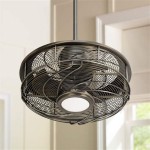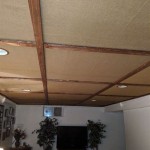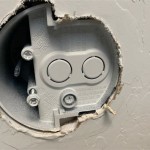Can You Paint Acoustic Ceiling Tiles? A Comprehensive Guide
Acoustic ceiling tiles, commonly found in suspended or drop ceilings, serve an important function in many commercial and residential spaces. They are designed to absorb sound, reducing echoes and reverberations, thereby improving the acoustic environment. However, over time, these tiles can become stained, discolored, or simply outdated in appearance. A common question arises: can you paint acoustic ceiling tiles to refresh their look? The answer is yes, but with significant caveats and considerations.
Painting acoustic ceiling tiles is not as straightforward as painting a drywall ceiling. The porous nature of the tiles, crucial for their sound-absorbing properties, can be compromised by improper painting techniques or the wrong type of paint. Understanding these factors is vital to achieving a satisfactory result without diminishing the acoustic performance of the ceiling.
This article provides a comprehensive guide to painting acoustic ceiling tiles, outlining the potential benefits and drawbacks, the necessary preparation steps, the recommended paints and application methods, and the important considerations for maintaining acoustic integrity.
Understanding the Risks of Painting Acoustic Ceiling Tiles
While painting seems like a simple solution to improve the aesthetics of acoustic ceiling tiles, it’s important to acknowledge the potential risks involved. The primary concern is the reduction of the tile's sound-absorbing capabilities. Acoustic ceiling tiles are manufactured with open pores that allow sound waves to be absorbed rather than reflected. Applying paint, especially thick or multiple coats, can clog these pores, rendering the tiles less effective at sound dampening. This can lead to an increase in noise levels and a less comfortable environment, defeating the original purpose of the acoustic ceiling.
Another risk is the added weight. Paint adds weight to the tiles, particularly if multiple coats are applied. This additional weight can potentially cause the tiles to sag or even fall from the suspension grid. This is especially true for older or weaker tiles that may already be nearing the end of their lifespan. Therefore, careful consideration needs to be given to the type and amount of paint used.
Furthermore, the appearance of the painted tiles might not be ideal if the wrong type of paint or application technique is used. Uneven application, dripping, or visible brushstrokes can detract from the overall aesthetic. Also, certain paints might react negatively with the tile material, causing discoloration or other undesirable effects. Therefore, it is crucial to test the chosen paint on a small, inconspicuous area of a tile before embarking on the entire project.
Preparing Acoustic Ceiling Tiles for Painting
Proper preparation is paramount to achieving a successful outcome when painting acoustic ceiling tiles. The first step involves a thorough cleaning of the tiles. Dust, dirt, and cobwebs can accumulate on the surface, hindering the paint's adhesion and resulting in an uneven finish. Use a vacuum cleaner with a soft brush attachment to gently remove loose debris. Avoid using water or harsh cleaning agents, as these can damage the tiles.
Next, inspect the tiles for any stains or water damage. Address any underlying causes of stains, such as leaks from the roof or plumbing, before proceeding. Failure to do so will result in the stains reappearing through the paint. For stubborn stains, consider using a stain-blocking primer specifically designed for porous surfaces. Apply the primer sparingly and allow it to dry completely before proceeding with the paint application.
If any tiles are significantly damaged or warped, it is generally advisable to replace them rather than attempting to paint them. Painting damaged tiles will likely only exacerbate the problem and result in an unsightly appearance. Replacement tiles can often be purchased from the same manufacturer or from a building supply store. Ensure the replacement tiles match the existing ones in terms of size, pattern, and acoustic properties.
Before beginning the painting process, protect the surrounding areas from paint splatters. Cover the floor with drop cloths and mask off any walls or fixtures adjacent to the ceiling. This will save time and effort in cleaning up later. It is also recommended to wear appropriate protective gear, such as gloves and a mask, to avoid contact with paint and dust.
Selecting the Right Paint and Application Method
The choice of paint is critical when painting acoustic ceiling tiles. The optimal choice is a paint specifically designed for acoustic tiles. These paints are formulated to be thin and non-bridging, meaning they won't completely seal the pores of the tile. Choose a flat, matte finish to minimize light reflection and maintain a subtle appearance. Glossy or semi-gloss paints should be avoided, as they can create glare and highlight imperfections.
If you cannot find paint specifically labelled for acoustic tiles, a high-quality latex paint thinned with water can be used as an alternative. Thinning the paint helps it penetrate the tile's surface without creating a thick, pore-clogging layer. A mixture of one part water to three parts paint is generally recommended, but it's advisable to experiment with a small sample to determine the ideal consistency.
The preferred application method is spraying. Using a compressed air sprayer allows for a thin, even coat of paint to be applied without excessive saturation. Multiple light coats are preferable to one heavy coat. This approach minimizes the risk of clogging the pores and adding excessive weight to the tiles. When spraying, maintain a consistent distance from the tiles and use a smooth, overlapping motion.
If spraying is not feasible, a foam roller can be used. Choose a roller with a short nap to avoid applying too much paint at once. Apply gentle pressure and roll in one direction to achieve an even coating. Avoid pressing too hard, as this can damage the delicate surface of the tiles. As with spraying, multiple thin coats are better than one thick coat.
Brushing is generally not recommended for painting acoustic ceiling tiles. Brushes tend to apply paint unevenly and can leave visible brushstrokes. However, if brushing is the only option, use a soft, wide brush and apply the paint in light, even strokes. Avoid overworking the paint or applying too much pressure.
Allow each coat of paint to dry completely before applying the next. This will prevent the paint from becoming sticky or uneven. Follow the manufacturer's instructions regarding drying times. It may be necessary to apply two or three coats to achieve the desired coverage. However, be mindful of the potential for reducing acoustic performance with each additional coat.
Maintaining Acoustic Integrity After Painting
After painting, it is crucial to assess the acoustic performance of the ceiling. Conduct a simple sound test by clapping your hands or making a loud noise in the room. Listen for any changes in reverberation or echo. If the room sounds noticeably more echoey or less dampened than before, it is likely that the paint has reduced the acoustic effectiveness of the tiles.
If the acoustic performance has been compromised, there are a few possible remedies. One option is to replace some of the painted tiles with unpainted ones to restore the overall acoustic balance. Another option is to install additional sound-absorbing materials in the room, such as acoustic panels or curtains. These materials can help compensate for the reduced performance of the painted ceiling tiles.
Regular maintenance is also essential to preserve the appearance and acoustic performance of the painted ceiling. Periodically vacuum the tiles with a soft brush attachment to remove dust and debris. Address any stains or water damage promptly to prevent them from becoming permanent. Avoid using harsh cleaning agents or abrasive materials, as these can damage the paint and the tiles themselves.
It is important to note that painting acoustic ceiling tiles is not a permanent solution. Over time, the paint may begin to peel, crack, or fade. When this occurs, it may be necessary to repaint the tiles or replace them altogether. However, by following the guidelines outlined in this article, it is possible to successfully paint acoustic ceiling tiles while minimizing the impact on their acoustic performance and extending their lifespan.

How To Paint A Drop Ceiling The Painting Company

Acoustical Ceiling Tile Painting Installation And Alpine

Can You Paint Ceiling Tiles Hometalk

How To Paint A Drop Ceiling The Painting Company

Painting Acoustic Ceiling Tiles And Painted Ceilings On

Acoustical Ceiling Tile Painting Installation And Alpine

Painted Acoustic Ceiling Tiles Diy And Home Improvement

Can You Paint Drop Ceiling Tiles Hunker

Ceiling Tile Whitener New White Share Corp

How To Paint Your Classroom Ceiling Tiles Make A Mark Studios
Related Posts








